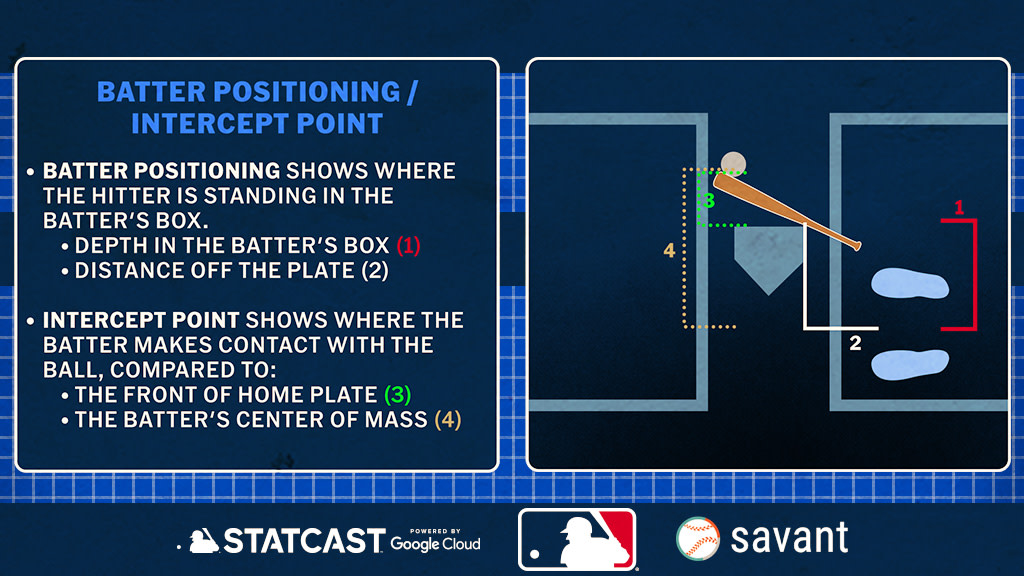Intercept Point
Definition
Intercept point (or contact point) shows where the hitter makes contact with the ball -- or where the bat and ball pass nearest to each other, in the case of a swing-and-miss.
Statcast shows each hitter's intercept point compared to:
- The front edge of home plate
- The batter's center of mass (defined as the midpoint between his hips)
Because a hitter's contact point depends partly on where they are standing in the batter's box, both versions of the intercept point are reported. For example, a hitter who stands far back in the batter's box might make contact behind home plate, but still in front of his own body. Conversely, a hitter who stands far up in the box might make contact well out in front of home plate, but at a deeper point compared to his own batting stance.
Intercept point can be tracked for all competitive swings, batted balls or swings-and-misses.
Types of contact point
Intercept point data allows us to compare batters who “hit the ball out in front” -- either in front of home plate, or in front of their body -- to batters who “let the ball get deep.”
Hitters with an “out-in-front” contact point will often be fly-ball hitters or pull hitters. Hitters tend to generate the most home run power when they hit the ball out in front, because such a contact point allows them to pull the ball in the air, and allows their bat to reach a higher bat speed over the course of the swing. Many “pull power” hitters have contact points far out in front of the plate or their bodies, such as Jose Altuve, Nolan Arenado, Justin Turner or Isaac Paredes.
- Altuve had one of the farthest out-in-front contact points compared to home plate in 2024 -- he made contact an average of 16 inches in front of the plate on his batted balls.
- Turner had one of the farthest out-in-front contact points compared to his own body -- he made contact an average of 38.7 inches in front of his center of mass.
Hitters with a “deep” contact point will often be all-fields, or opposite-field hitters. Many hitters with “all-fields power” have deeper contact points, such as Freddie Freeman, Shohei Ohtani, Juan Soto or Mike Trout.
- Ohtani had one of the deepest contact points compared to home plate in 2024 -- he made contact an average of 3.7 inches behind the front edge of the plate on his batted balls.
- Freeman had one of the deepest contact points compared to his own body -- he made contact an average of 26.1 inches from his center of mass.
Statcast intercept point leaderboard
Bat/ball intercept point data is available starting with the second half of the 2023 season. The current season leaderboard, which also includes batting stance data, can be viewed here.
